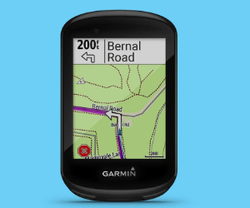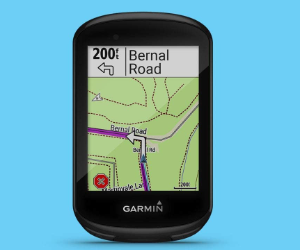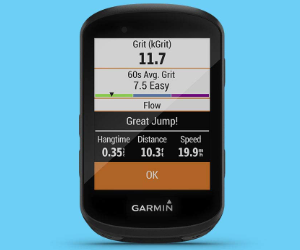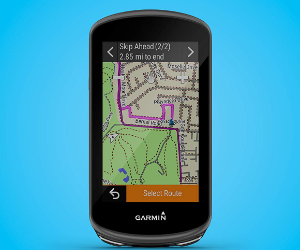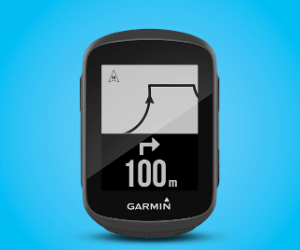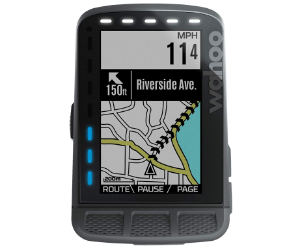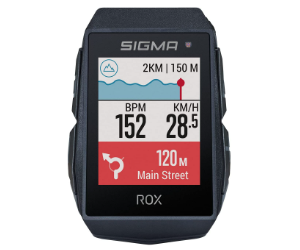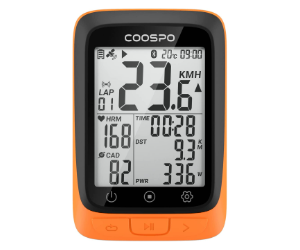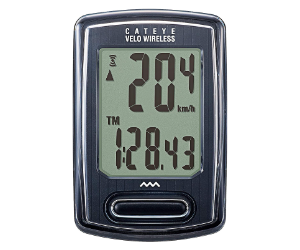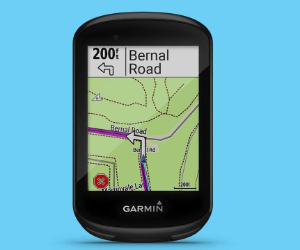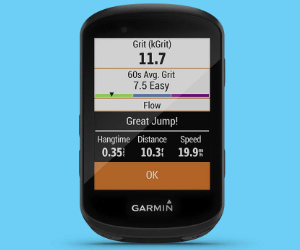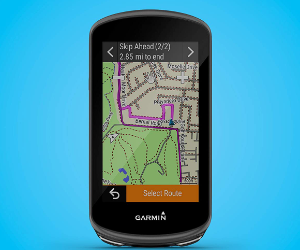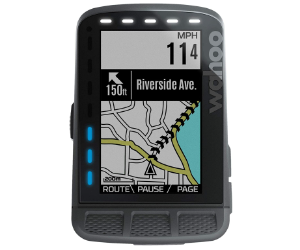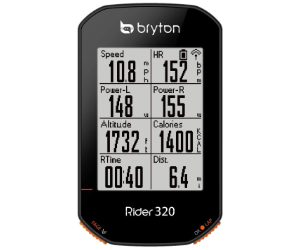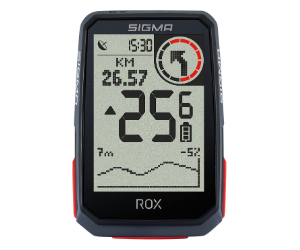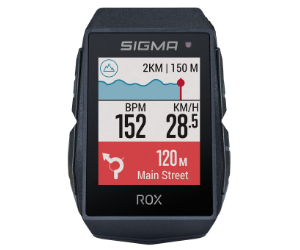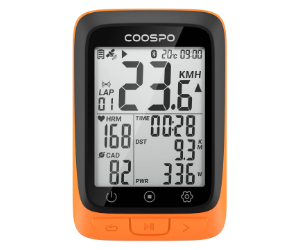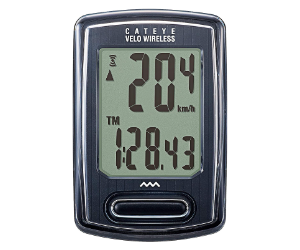Best Bike Computer
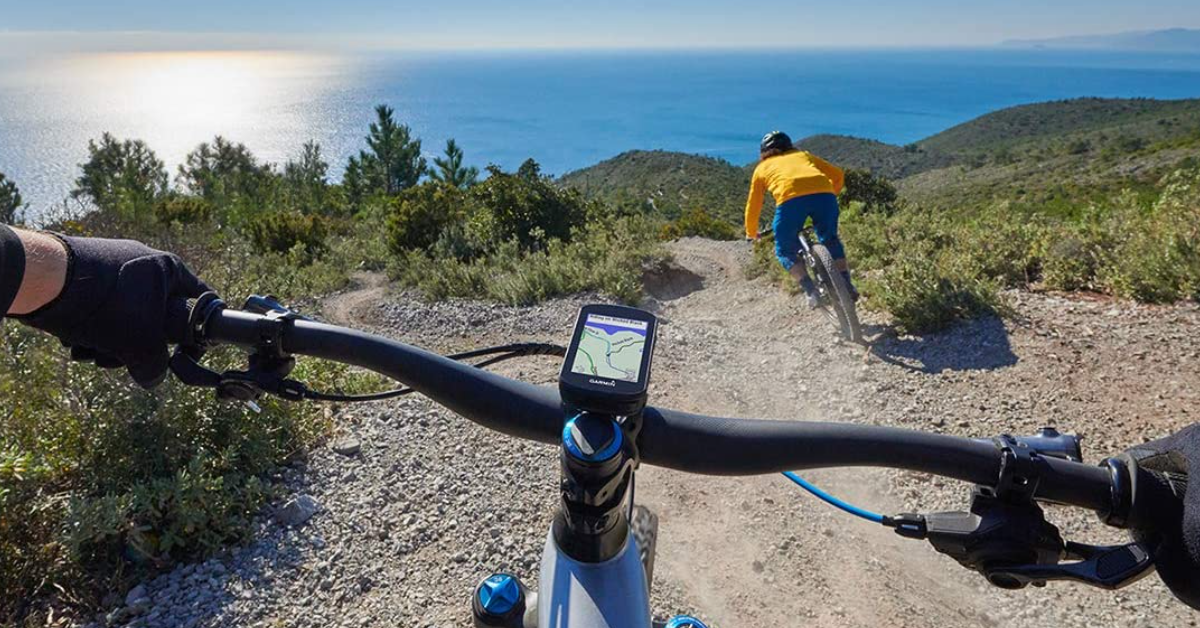
There are many different bike computers on the market, and it can be difficult to decide which one is right for you. In this article, we look at some of the best bike computers and discuss their features. We will also discuss which bicycling computer is for athletes and which one is for hobbyists. We hope to help you decide which one is right for you. So, if you want to learn more about bike computers, keep reading!
10 Best Bike Computer
Detailed Overview
Let's take a closer look at bike computers, how one is better than the other, what the pros and cons are, and which one is right for you.
Author's Choice
The Garmin Edge 830 is an excellent GPS cycling computer for athletes and riders who want to track their progress to the max. The Garmin Edge 830 is that is perfect for tracking MTB dynamics.It features a jump count, jump distance, hang time, and Grit, a measure of the ride’s difficulty, and Flow, which tracks the smoothness of your descent so you have a score to beat next time. It also includes a safety bike alarm, group messaging and tracking, assistance, and compatibility with Varia rearview radar and lights so you can see and be seen. Additionally, it has a long battery life of up to 20 hours with GPS, and is compatible with the Garmin Charge power pack for up to 40 hours of additional battery life. Finally, it comes with routable Garmin Cycle Map pre-loaded, plus on-device route creation, off-course recalculation, and back to start features.
Pros:
- Perfect for Mountain Bike dynamics tracking
- Battery life of up to 20 hours
- Includes a bike alarm
- Routable Garmin Cycle Map with popularity routing
- Offers on-device route creation and off-course recalculation
- Map Type Worldwide, North America
Cons:
- Useless for navigation in SG
People's Choice
The Garmin Edge 530 is a bike computer that offers dynamic performance monitoring, GPS, and safety features. It has a battery life of up to 20 hours with GPS, and works with the Garmin Charge power pack for up to 40 hours of additional battery life. You can customize it with free apps, widgets, and data fields from the Connect IQ Store. The Edge 530 also has Cycling safety features, like a new bike alarm, and Dynamic performance monitoring, which provides insights on things like your VO2 max, recovery, training balance, heat and altitude acclimation, nutrition, hydration and more when paired with compatible sensors. Finally, the MTB dynamics track jump count, jump distance and hang time, as well as Grit, a measure of the ride's difficulty, and Flow, which tracks the smoothness of your descent.
Pros:
- Dynamic performance monitoring
- Customizable
- Safety features
- Long battery life
- MTB dynamics tracking
- Map Type Worldwide, North America
Cons:
- Some users had difficulty in setting up the navigation system
- Some users have noted that it does not connect to Garmin Connect when using iPhone 11
Premium Choice
The Garmin Edge 1030 Plus Bike Computer is a top-of-the-line GPS device that is perfect for any cyclist, whether you are a beginner or a seasoned pro. The 3.5" color touchscreen display is easy to read and navigate, and the 24 hours of battery life ensures that you won't have to worry about running out of juice mid-ride. The device also features mountain bike dynamics, such as the ability to track jump distance and hang time, as well as Grit and Flow metrics to rate the difficulty of a ride and measure how smoothly you descend a trail. Additionally, the ClimbPro feature is perfect for managing your efforts on long climbs, and the device can even provide riding and training recommendations based on your current training load and VO2 max. Whether you are looking for a simple bike computer to track your rides or a fully-loaded GPS device to help you train like a pro, the Garmin Edge 1030 Plus is the perfect choice.
Pros:
- 3.5" color touchscreen display
- Long battery life
- MTB dynamics tracking
- ClimbPro functions for long climbs
- Wi-Fi, BLUETOOTH, ANT+
Cons:
- Some users find the device too multifunctional and complicated
- Map Type North America ( For other countries you need to load another map )
Best Budget
The Garmin Edge 130 is a small and lightweight bike computer with a 1.8-inch display. It tracks jump count, jump distance and hang time with mountain bike dynamics, and also includes GPS so you can know where you are and how to get back to the start. The Edge 130 also provides dynamic performance insights such as VO2 max and heart rate (when paired with a compatible heart rate monitor), making it a great choice for those looking to improve their fitness. The battery life is 12 hours.
Pros:
- Small and lightweight
- Tracks jump count, jump distance and hang time with mountain bike dynamics
- GPS
- Battery life is 12 hours
Cons:
- Map Type North America ( For other countries you need to load another map )
Best with User Friendly App
The Wahoo ELEMNT ROAM is a top of the line bike computer that provides riders with turn-by-turn navigation, on-device mapping, and more. This unit also features ANT+ radar integration, making it easier than ever to avoid obstacles while out on the road. The companion app makes setup a breeze, and the three easy-sense convex top buttons make operation a snap. The ELEMNT ROAM also provides on-screen pop-up alerts and LED indications to notify you of calls, texts, emails, WhatsApp, Signal, Line, Telegram, and WeChat messages on iOS and Android (if you are riding with your smartphone). It also has the ability to sync with compatible accounts (Strava, Ride With GPS, Best Bike Split, Komoot, MTB Project, SingleTracks) to automatically and wirelessly download your saved routes. Whether you're looking for the a reliable bike computer to track your rides, the Wahoo ELEMNT ROAM is an excellent choice.
Pros:
- Bluetooth
- Call, Text, And E-mail Alerts
- Companion App Setup
- Battery life is 17 hours
- PerfectView Zoom
- ANT+ Radar Integration
- Map Type Worldwide
Cons:
- To download maps of other countries, you need to make more than one step through the APP
With Lots of Functions
The Bryton Rider 320E is a high-quality bike computer with GPS that offers 35 hours of battery life. It has a black and white 2.3-inch screen with a powerful backlight and adjustable contrast, making it easy to read even in low light conditions. The computer also comes equipped with 72+ functions and 5 satellite system support for a stronger signal. Additionally, it is compatible with Bryton Active App and ANT+ Power Meter for an even better experience.The calibration feature makes it easy to get the most accurate readings. Overall, the Bryton Rider 320E is an excellent bike computer that is perfect for serious cyclists.
Pros:
- GPS
- Long Battery Life
- ANT+ Power Meter
- 5 Satellite Systems Support
- Bluetooth
- Easy Setup with the Bryton App
Cons:
- Glossy screen is reflective
For Easy Mounting
The Sigma ROX 4.0 Bike Computer is a GPS-enabled device that offers easy 3-button operation and is IPX7 water resistant. With functions such as altitude profile, speed, distance, and training time, navigation information, and connection to an e-bike, the Sigma ROX 4.0 is perfect for cyclists of all levels. The 2.4" diagonal display makes it easy to see all of the information at a glance, and the ROX 4.0 can be easily connected to additional sensors using ANT+ and BLE, for measuring speed, heart rate, and cadence. Installation is quick and easy, making the Sigma ROX 4.0 the perfect choice for anyone looking for a reliable and easy-to-use bike computer.
Pros:
- IPX7 Water Resistant
- Large Display
- Quick Mounting
- Smart Phone Connectivity
- Lightweight
- Battery life 20 hours
Cons:
- Users note that the Komoot program is sometimes unstable with this device
- Map Type De - Oceanium
Best for E-Bike
The SIGMA SPORT ROX 11.1 EVO bike computer is a high-end bike computer that uses GPS, Galileo, and GLONASS for position tracking. It is also IP67 water resistant and has many features, such as the ability to track speed and distance with GPS, barometric altitude measurement, and navigation with Track or Komoot compatibility. It also has a built-in crash alert feature that informs emergency contacts if you fall off your bike. Additionally, it comes with 20 possible sports profiles preinstalled and is compatible with the SIGMA RIDE app, which allows you to personalize display views and collect and manage training data. Finally, it is easy to install and is compatible with e-bike systems.
Pros:
- IP67 Water Resistant
- Quick Mounting
- Smart Phone Connectivity
- Compatible e-bike system
- Lightweight
Cons:
- Users note that sometimes there are problems with transmitting information to the Sigma Data Center
- For some users, the screen is small (display area is 38 x 28mm)
Best Water Resistant
This bike computer is a great choice for cyclists who want a reliable, compact and lightweight device to track their rides. The computer also has s a 2.4 inch LCD display an auto-backlight feature that makes it easy to read in low light conditions. The CoospoRide app pairs with the computer via Bluetooth, and the 2.4 inch LCD display is backlit for easy viewing. The computer is also waterproof, making it ideal for all kinds of riding conditions.
Pros:
- GPS
- Battery life 28 hours
- IPX7 Water Resistant
Cons:
- You cannot download the .fit file directly to Strava through the USB port on your PC, only through the Coosporide App you can synchronize the activity (the .fit file) with Strava
Best for Amateurs
This CATEYE - Velo Wireless Bike Computer is a great device that helps you track your progress when biking. It displays current, max, and average speed, total distance, trip distance, elapsed time, calorie consumption, pace arrow, and clock. The device also knows when you stop and automatically pauses the timer and averages your speed. You can also use it to track how many calories you've burned. The Velo Wireless is a great product for anyone who wants to improve their biking skills.Finally, the product runs on battery power.
Pros:
- Data for Health
- Quick Mounting
- 7 features
Cons:
- Runs on battery power
- Without GPS

Best Bike Computer - Buyer’s Guide
What to Consider when Buying a GPS Device for Cycling?
Connectivity
Connectivity is key for many aspects of life, from personal relationships to work communication. The same can be said for mobile phones and bike computers. Connecting your bike computer to your mobile phone can offer a number of benefits, from incoming call and text alerts to real-time tracking. This connectivity can be a lifesaver if you're out on a ride and something happens - your loved ones can easily track your location and know that you're safe. Additionally, many modern bike computers now offer gearshift information for electronic drivetrains. This is helpful for both cyclists and those who are supporting them from the sidelines, as it allows everyone to see what gear the cyclist is in and how they might need to adjust their riding. Ultimately, mobile phone connectivity is beneficial for a number of reasons, and it's something that more and more cyclists are taking advantage of.
Most high-end models, such as the Garmin Edge 1030 Plus and Wahoo Elemnt Bolt, are equipped with Bluetooth and ANT+, allowing you to pair them with external sensors such as heart rate monitors, cadence sensors, speed or power meters, etc. This opens up a range of possibilities and will help you improve your workouts. In addition, most high-end cycling computers integrate easily with third-party cycling apps like Strava, TrainingPeaks and Komoot. Some even connect to WiFi for automatic data downloading, saving you from having to download your ride results via Bluetooth when you get home.
Mounting to a Bike
A key factor that's often overlooked is how the device attaches to the bike. Most GPS units mount to either the handlebar or the stem. Generally, the more common the brand, the more mounting options there will be. Garmin is the leader in this area, with aftermarket mount options that let you decide exactly how and where the device sits on your handlebar or stem. Whichever mount you choose, make sure it's secure and won't wiggle or fall off while you're riding. You should also be able to see the device while you're pedaling so that you can glance down at it periodically to check your progress.
The Gamin and Wahoo use mount that are held in place with a quarter-turn twist-lock. This is a convenient way to mount your computer to the bike, as it is easy to remove when needed. Out-front mounts are popular because they put the computer in front of the bars, making it easier to see while riding. These mounts also make the cycling computer flush with the bars, giving a cleaner look. Either type of mount is a good choice for your cycling computer.
Battery Life
Battery life is an important consideration when choosing a cycling computer. Many computers will have a claimed battery life of between 15 and 20 hours, but this is of course dependent on use. External battery expanders can bump up the battery life of your cycling computer if you’re out for a particularly long time. If you are looking to complete long rides or multi-day adventures, it is worth seeking out a cycling computer with decent battery life.
Mapping
Mapping capabilities in cycling computers have come a long way in recent years. Many computers now come pre-loaded with in-depth maps similar to topographic maps. This is extremely useful for bikepacking, but can also be helpful if you're cycling somewhere unfamiliar - whether on holiday or close to home. One thing to keep in mind is that maps often only cover certain territories.
For example, if you're using a Garmin 1030 Plus, you'll need to download maps for regions outside of Europe and North America. Additionally, plenty of computers allow you to sync courses from route-building apps such as Ride With GPS or Komoot. This is an extremely convenient feature that allows you to easily plan and execute complicated routes. Overall, mapping capabilities in cycling computers have come a long way and offer a lot of value to riders of all levels.
Screen Size and Display Type
As a general rule, the larger the screen size, the easier the information will be to read. You'll also be able to show more information on the screen without having to scroll to another page.
Of course, the downside is that larger units can be cumbersome, crowd your handlebar, and add extra heft . The Garmin Edge 820 2.3 inch (5.84 cm) screen has become something of a benchmark for measuring performance and overall riding. Most new devices are as large or larger as the Garmin Edge 1030 3.5 Inch (8.89 cm)For those looking for a truly diminutive option, the Garmin Edge 130 Plus would be our pick with its 1.8in (4.57cm) display, Sigma ROX 11.1 EVO 1.77in (4.50 cm). It's not quite as good for reading at speed as some of its larger siblings, but it more than makes up for it in terms of being lightweight and barely noticeable on your bars. Plus, it's a very capable little device in its own right.
With the advent of increasingly powerful and miniaturized electronics, display technology in cycling computers has come a long way in recent years. While monochrome screens used to be the norm, color displays are now ubiquitous, making it easier to read, especially when working with detailed maps. Some bike computers still use gray screens because they are better readable in bright light.
Touch screens are also becoming the standard for new devices, as they help make it easier to switch between menus and select the data you want. However, buttons also do the trick, especially when you drive with gloves on.
Frequently Asked Questions/FAQ
Do all bike computers have GPS?
No, not every cyclist needs GPS. Unless you are going on a road trip on a bicycle or riding in unfamiliar terrain. Remember, the best bike computer depends on the individual. However, there are many excellent bicycle computers that do not have GPS. So whether or not you need a GPS is up to you. Just remember to consider your habits before buying.
Is a bike computer worth it?
This is a question that many cyclists ask themselves, especially when they are first starting out. Bike computers can range in price from $40 to several hundred dollars, so it is understandable why some people may be hesitant to invest in one. However, we believe that bike computers are definitely worth the investment. They are packed with features that can be extremely helpful for riders of all levels, from beginners to experienced cyclists.
For example, most bike computers come with GPS capabilities, which can be very useful for mapping out routes and tracking distance. They also usually include sensors that can track speed, cadence, and heart rate. This data can be very helpful for understanding your performance and making necessary adjustments to your training regimen. In addition, many bike computers now come with Bluetooth connectivity, which allows you to sync your data with phone apps and other devices. So, if you are looking for a way to take your cycling to the next level, we recommend investing in a quality bike computer.
Conclusion
In conclusion, we hope that this article was able to help you understand cycling computers and choose the right one for your needs and your training. So, which bike computer is the best for you? It depends on your needs and what type of cyclist you are. We’ve highlighted some of our favorite models on the market and given you a few things to think about when making your purchase. Happy cycling!
